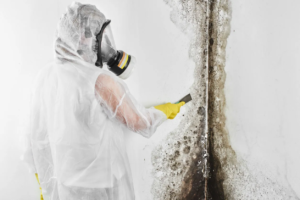Helena Roofing Company can handle a variety of projects. They are often licensed and insured, and they have the experience to provide a quality roof installation. In addition, they can offer warranties and other services to homeowners.

A well-maintained roof can make your home more attractive and increase its value. It can also improve energy efficiency.
A roofing company is a business that specializes in roof installation, repairs and maintenance. It may also offer other exterior services such as siding and window replacements. These companies may employ licensed professionals to carry out the work. Some have an insurance division, allowing them to provide homeowners with comprehensive coverage for their roofs and other damage. A roofing company that has a proven track record will enjoy high client retention rates, attracting new customers and retaining existing ones.
Experienced roofing contractors are able to deal with all aspects of a re-roofing project, including assessing damage and determining the cost of a replacement. They can also address any unexpected problems that arise during the re-roofing process and make sure that the job is completed on time. Besides their knowledge of the re-roofing process, these contractors are also aware of local weather conditions and will recommend materials that will protect homes from the elements.
Another advantage of a roofing company with extensive experience is their ability to comply with safety standards. This ensures the health and well-being of their crews, as well as that of their clients. They are also able to train their crews effectively, ensuring that all the necessary skills are acquired. Moreover, experienced contractors are familiar with the safety protocols of various roofing tools, making them less likely to cause accidents or endanger themselves or their clients.
Getting started in the roofing industry requires some planning. You will need to decide on a legal structure for your business. The type of entity you choose will affect how much tax you have to pay, as well as the number of small business tax deductions you can claim.
To get the word out about your roofing company, use digital advertising on Google and social media platforms. Create a website that features customer reviews and testimonials. A professional roofing company will have a logo, photos of past projects, contact information, and a list of the services they offer. They will also have truck wraps that display their names and phone numbers.
Warranty
Roofing projects are often expensive, and homeowners want to ensure that the investment is protected. This is why many roofers offer warranties. However, it is important to know what a roofing warranty actually covers before you hire someone. There are two types of roofing warranties: material and workmanship. While material warranties cover the manufacturer’s materials, workmanship warranties address the installation process. Generally, the best roofing companies will offer both a material and workmanship warranty.
The most common type of roofing warranty is a limited lifetime warranty, which can be found with asphalt shingle roofs. This type of warranty covers the cost of repairing and replacing the roof for the duration of the coverage period, which can be 25-30 years or more. However, you should be aware that these warranties typically do not cover consequential damages to other parts of your home. These include damages to interior walls, floors, furniture, and possessions that may be caused by a leaky roof. In addition, a limited lifetime warranty does not cover the replacement of other roofing components such as gutters and valleys.
Some manufacturers also offer enhanced warranties. These typically provide 10 or more years of coverage for workmanship, non-prorated periods on the material, and transferability to future homeowners. However, these types of warranties are usually only available for roofing systems that have been installed by an authorized contractor and registered with the manufacturer.
A good roofing company will be able to explain the details of their warranty and answer any questions you may have. It is also a good idea to look at the roofer’s track record of previous jobs and customer reviews before you make your decision. A reputable roofing company will be proud to display their work and provide references to show their commitment to quality service.
When selecting a roofing contractor, it is essential to read the fine print of their warranties. Some things can void a warranty, including failure to set up regular inspections or hiring another contractor. Additionally, most warranties exclude damage caused by snowfall, hail, or lightning. Some manufacturers also require contractors to meet specific registration requirements before a warranty can be provided, so it is a good idea to check with the roofing company before you sign a contract.
Cost
A roofing company specializes in the installation, repair, and replacement of roofs. They may also offer gutter services, window services, and siding. They typically employ licensed professionals and gain standing with manufacturers to be able to offer substantial warranties on their work.
The cost of reroofing a house varies according to the choice of materials and the extent of work required. Basic asphalt shingles cost between $2,000 and $4,000. Alternate materials, such as copper, are more expensive, but can add value to the home and last for years. The choice of shingle type and material has the biggest impact on the overall cost. A roofing company will be able to give you a ballpark figure on the costs of different materials and options.
Homeowners should always compare the prices offered by different roofing companies. Those that are not licensed and insured should be avoided. Many unlicensed contractors are storm chasers that will follow a storm and canvass the neighborhood for homeowners with damage to their roof. They may charge exorbitant prices and expect homeowners to pay out of pocket.
A new roofing business can take months to break even, and you will need to have sufficient working capital to meet your personal expenses while waiting for your company to turn a profit. You should discuss this with a financial advisor right from the start of your venture. He or she can help you establish realistic short-term and long-term goals for your business. He or she can also help you determine your startup costs, including operational and marketing expenses. He or she can also suggest ways to reduce your initial costs and help you manage cash flow effectively.








